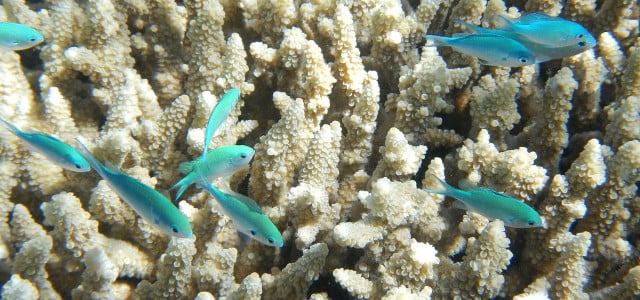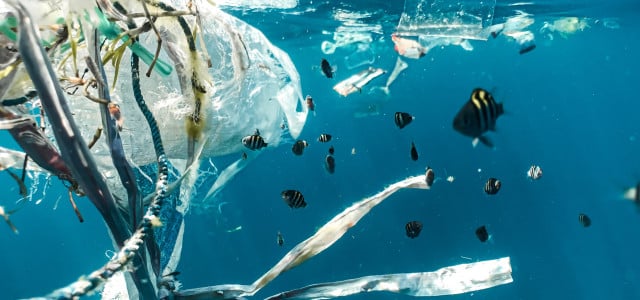Coral reef bleaching is the loss of color in corals due to factors such as pollution and heat. Learn about why coral reefs are dying and how you can help with their preservation.
Coral reefs are home to millions of fish and other marine organisms, and they are also vital to all life on earth. At least 25 percent of marine life on earth needs coral reefs during their life cycle. The effects of climate change are causing alterations in the ocean that lead to a host of issues, including coral reef bleaching. This is a big issue because many marine animals such as starfish, shrimp, and sea turtles depend on coral reefs for survival. If we continue to pollute both the air and the ocean, coral reefs and other organisms will face catastrophic consequences. Read on to learn about why coral reefs are dying, and what you can do to save the ocean to help prevent further coral bleaching.
Why Are Coral Reefs Dying?
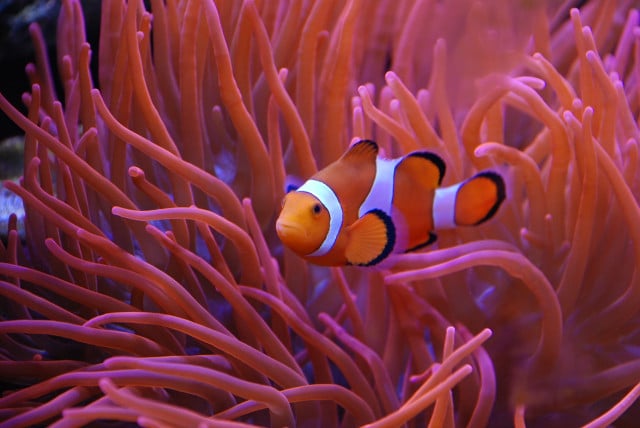
(Foto: CC0 / Pixabay / ottielie)
Corals reefs are characterized by their stunning colors, and are often the biggest highlight of snorkeling and diving experiences around the world. Corals get their colors due to zooxanthellae, a microscopic marine algae that lives inside the coral tissues. The coral and the zooxanthellae have a mutually beneficial relationship, and they both depend on this partnership to thrive. This algae is responsible for the coral’s food intake through photosynthesis, which also helps them to grow and reproduce. Coral reef bleaching happens when environmental factors cause the coral to stress out, and it consequently expels the algae. When this happens, corals lose their color, and although some of them can feed themselves, most corals starve and eventually die.
The main triggers for coral bleaching are the changes in the ocean environment caused by climate change. These include changes in water temperature, excessive sunlight, and/or water pollution. According to a report from 2018, more than 75 percent of tropical reefs experienced heat stress up to the point that bleaching happened between 2014 and 2017; at nearly 30 percent of reefs, it even reached mortality level.
In some circumstances, corals can recover, but it can take several decades to recover from coral reef bleaching. Unfortunately, severe bleaching is happening at a rate faster than the coral reefs can recover. Recovery can only occur when water conditions improve and return back to how they were.
https://utopia.org/guide/what-are-dead-zones-in-our-oceans/
Coral Reef Bleaching: Causes & Effects
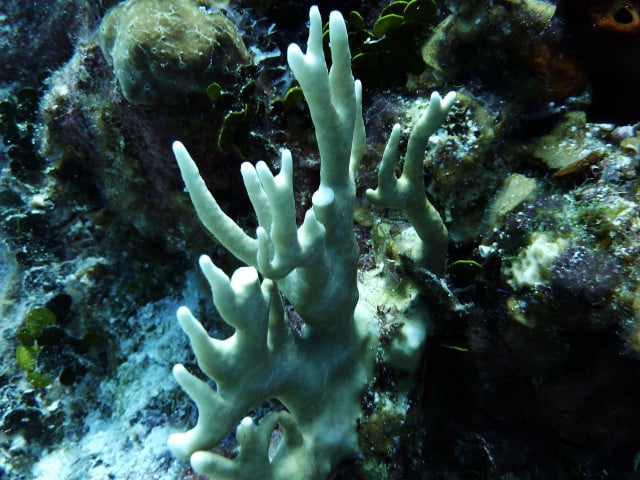


(Foto: CC0 / Pixabay / macg)
The leading cause of coral reef bleaching is climate change. The effects of climate change on the environment, such as changes in temperatures and higher solar irradiance are negatively affecting coral reefs. The main causes and effects of coral reef bleaching include the following:
Causes
- Change in water temperature: even a slight change in temperature can stress the coral reefs, causing them to drive out the algae. Global warming has attributed to higher water temperatures, which are the main cause of coral reef bleaching.
- Unethical human activities, such as dumping trash in the ocean
- Land and water pollution, like hot water releases from power plants into waterways, oil spills, fuel leaks from ships, and chemical sunscreens
- Exposure to the air: this happens to near-shore corals when extreme low tides occur. The change in tides is also a knock-on effect of climate change.
- Overexposure to sunlight: high solar irradiance due to climate change is very damaging for corals, especially when corals are in shallow waters and temperatures are higher than what they should be.
Effects
- Invasion of seaweed and other species: degraded coral ecosystems are particularly vulnerable to invasive species of algae and seaweed.
- Decrease of coral reefs: coral reefs that have suffered of bleaching have lower growth and reproduction capacity. Due to their vulnerable state, they are more susceptible to diseases and mortality rates.
- Changes in coral reef ecosystems: When coral reef bleaching takes place, it also affects all the species that rely on coral for food and shelter. Some of these organisms may face extinction since many of them are already at risk.
- Impacts on food supply and other economic activities: Coral reef bleaching can lead to big changes in fish communities, meaning that people who rely on reef fish species as a food source or for a living, will be severally affected.
- Other species will be endangered: dying coral reefs also impact larger creatures that rely on reef fish for their diet, such as sharks and dolphins. In other words, the whole marine food supply chain is affected by coral reef bleaching.
On top of alterations caused by climate change, coral reefs are also threatened by other factors, such as:
- Damaging fishing techniques: overfishing and bad fishing practices are the most destructive techniques for coral reefs. Overfishing herbivorous fish that eat seaweed causes an uncontrolled growth in seaweed that can suffocate the coral.
- Unethical tourism: coral reefs can be stressed by any human interaction, including accidental touching, or when tourists want to bring home a piece of coral for themselves and break it off.
- Human-caused pollution: pollutant discharges from coastal development and deforestation activities release a lot of chemicals, insecticides, and oils to the ocean, which are dangerous for the corals.
How To Help Reduce Coral Reef Bleaching
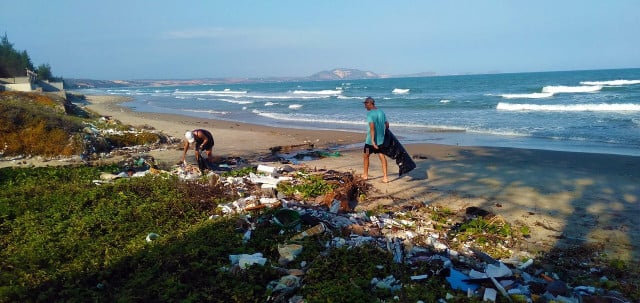


(Foto: CC0 / Pixabay / sergeitokmakov)
Coral reef bleaching doesn’t just happen due to a mistreatment of the ocean, but to the environment as a whole. This means that no matter how far or close from the ocean you live, you can do something to help preserve the corals. Adapt the following lifestyle changes to help benefit the environment as a whole, and do your part in reducing coral reef bleaching:
- Recycle your trash at home: dispose of your trash properly in bins, and if you visit the coast, be especially mindful and don’t leave trash behind you. In addition, you can try to go plastic-free, to reduce the amount of plastic trash you generate at home.
- Volunteer: if you live near the beach or near a river, you can volunteer to pick up trash in your community. You will be helping reduce the amount of garbage that ends up in the sea every day, limiting microplastics in the ocean, as well as dangerous chemicals. You can also join NGOs, private initiatives, or even projects that aim to do clean-ups on a larger scale, such as The Ocean Cleanup.
- Use natural, organic fertilizers: the chemicals from fertilizers are absorbed by the soil and end up into waterways that will end up in the sea. These are very harmful for the ocean and for coral reefs. We recommend making your own homemade fertilizer using natural ingredients.
- Adopt more environmentally friendly and sustainable habits: if you have public transportation at your disposal, or if you own a bike, take advantage of them. Every little bit counts, since the emissions from greenhouse gases to the atmosphere contribute to ocean acidification.
- Save energy to slow down global warming: conserve energy by turning off lights when you don’t need them, don’t preheat your oven unless it’s really necessary for the recipe, and buy energy-efficient appliances.
- Wear reef friendly sunscreen: since the label isn’t regulated, you can’t just trust any sunscreen that calls itself reef friendly. Instead, check out the active ingredients list to determine whether it’s safe or not. The HEL list is a great starting point for chemicals to look out for.
Read on:
- Plastic-Free Shopping: 3 Easy Tips for Waste Reduction
- How to Choose UV Protection: Physical Sunscreen vs. Chemical Sunscreen
- Pacific Garbage Screening Will Remove Tons of Plastic Waste from the Ocean
** Links to retailers marked with ** or underlined orange are partially partner links: If you buy here, you actively support Utopia.org, because we will receive a small part of the sales proceeds. More info.
Do you like this post?






